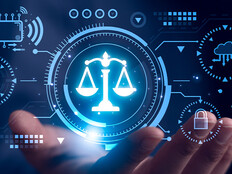In effect, chatbots offer a first point of contact for customers. While they’re not yet capable of accurately duplicating the entire range of human conversation, they provide a way for companies to reduce contact center or customer service costs by offloading easily answered inquiries to automated processes.
Chatbots typically comprise two parts: a natural language understanding (NLU) platform to parse customer requests, and an API connecter service to link with key external systems.
How do Chatbots Work?
Machine learning is the core of chatbots. “At the heart of chatbots, there are a number of algorithms that can interpret what the customer is trying to say or do,” says Gallego. “By monitoring his or her behavior or simply by requesting what is being attempted, the chatbot has different rules and decision-making procedures that can guess what the human being wants to do and provide a solution to make it happen. Some next-generation chatbots can even do the action themselves, but that requires human approval and is more of a 'bot' — that comes from the word 'robot' — than a chatbot.”
Just as the ML connection suggests, chatbots can learn over time by repeated exposure to human interactions. The most common types of learning are supervised and unsupervised: Supervised algorithms teach chatbots through provided examples, while unsupervised ML frameworks allow bots to learn through in situ observation.
WATCH: See how to use artificial intelligence to drive business initiatives.
Chatbots are also getting better at understanding human emotion by using natural language processing. Equipped with advanced NLP algorithms, Gallego notes that “chatbots can provide an answer in a natural way and can even ‘feel’ subtle variations in tone of voice or the way the request is written.”
What Are the Types of Chatbots?
Chatbots fall into three broad categories:
- Holistic: These bots handle the entire interaction, start to finish, without an option for customers to directly connect with an agent. Services requiring human help will be directed to alternative methods of contact. Holistic bots offer entry-level answers to common questions.
- Handoff: This type of chatbot takes the lead and then offers to connect customers with an agent once it reaches the end of its capabilities. The challenge? This may lead to significant waiting times if agents are busy.
- Hybrid: Hybrid solutions use chatbots up front, with agents monitoring the conversation on demand. When human help is needed, agents are alerted and given a history of the interaction to help guide ongoing discussion.
In practice, Gallego says, “chatbots are quite common in any sales process where the customer needs some advice or guidance. They are supercommon in service desks or customer interaction centers because they can filter a large number of requests with zero human involvement, and then pass the request on to experienced, knowledgeable humans when needed.”













